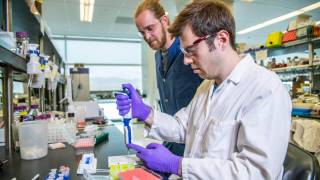Oral Herpes Rates Declining in Europe

Over 65 percent of young people have their first sexual activity unexposed to herpes, but risk catching it in adulthood, stated a new study.
This research found fewer people are being exposed to herpes simplex type 1 (HSV-1), also known as oral herpes in their youth.
HSV-1 is mainly transmitted by oral-to-oral contact during childhood, causing oral herpes, but it can also cause genital herpes. The other form of the virus (HSV-2) is sexually transmitted and causes genital herpes.
Furthermore, this research published in BMJ Global Health on July 16, 2020, suggests the prevalence of oral herpes amongst Europeans is falling by 1 percent per year.
This study’s findings indicate the prevalence of the herpes virus, which often manifests itself with cold sores, appears to be declining in younger people.
Previous research data focused on North America and Europe has suggested that there is a decrease in the acquisition of HSV-1 in childhood, a decline in its population prevalence in youth, and an increase in genital herpes cases that are caused by HSV-1.
For this study, a team of researchers from Weill Cornell Medicine-Qatar of Cornell University set out to examine the epidemiology of HSV-1 in Europe.
They systematically reviewed HSV-1 related publications, conducted various meta-analyses, assessed pooled prevalence rates in populations, and estimated pooled proportions of HSV-1 viral detection in clinically diagnosed genital ulcer disease and in genital herpes.
Their analysis gathered information from 142 suitable previous publications. From these publications, they extracted 179 overall population prevalence measures, four overall proportions of HSV-1 in genital ulcer disease, and 64 overall proportions of HSV-1 in genital herpes.
The results showed that more than two-thirds (67.4%) of the population in Europe tested positive for HSV-1, which is far lower than the historical level of universal infection in childhood in other parts of the world, such as Africa.
Around 32.5% of children and 74.4% of adults were infected in Europe.
Prevalence in the population increased steadily with age, being lowest in those aged below 20 years and highest in those aged over 50 years.
The researchers speculated that reasons for falling prevalence rates of HSV-1 could include a general decrease in both family size and school crowding, as well as improved hygiene and living conditions.
The results also showed that half of the first-episode genital herpes cases in Europe were already due to HSV-1, as opposed to HSV-2 infection.
Both forms of the herpes virus are lifelong and the World Health Organization (WHO) estimates there are 3.7 billion people under age 50 (67%) who have HSV-1 infection globally and 491 million people aged 15-49 (13%) worldwide with HSV-2 infection.
The study authors acknowledged that their systematic review had some limitations, primarily the unavailability of data for 25 of 53 European countries, and had comparatively less data for genital ulcer disease and genital herpes than population prevalence.
Nevertheless, these limitations did not appear to have posed a barrier to the interpretation of the results of the study, they said.
These researchers stated: “HSV-1 transition in Europe is leading to more heterogeneous and variable transmission by age and geography, and an increasing role for HSV-1 in genital herpes as a sexually transmitted disease.”
“The findings highlight the importance of disease surveillance and monitoring of HSV-1 seroprevalence and genital herpes etiology, and strengthen the case for an HSV-1 vaccine to limit transmission.”
Clinical researchers have been working on developing herpes vaccines in clinical trials focused on both therapeutic and preventive vaccine candidates, which are listed on this webpage.
Herpes vaccine news is published by Precision Vaccinations.
Our Trust Standards: Medical Advisory Committee

























